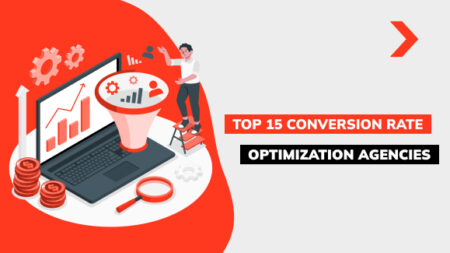Crafting a Winning Ecommerce Strategy
In the modern digital world, ecommerce is becoming an increasingly relevant, demanded, and popular form of online sales of products and services. Online shopping is a completely normal phenomenon for most modern people.
A goal without a plan is just a wish.
– Antoine de Saint-Exupéry
However, for local or global businesses to sell online, they need a specific ecommerce strategy. It consists of a set of clearly planned actions aimed at achieving certain goals. The step-by-step plan is implemented according to the introduction of ecommerce marketing and other innovative technologies according to the established schedule.

Understanding Digital Commerce
An innovative digital commerce strategy is primarily a set of actions taken by SEO specialists or marketing experts for companies, firms, individual entrepreneurs, organizations, and enterprises to promote their businesses on the World Wide Web. Each digital marketing strategy is developed individually and for a specific period. Adjustments are made when using the structured action plan, which is necessary to systematically improve the growth indicators of the brand’s web resource in the online space and to understand the target audience as a whole.
What is Ecommerce Strategy?
Today, an effective online marketing method is a detailed instruction necessary for the success of an online store and may include various elements. This includes competent media marketing, well-thought-out, high-quality content marketing, YouTube marketing, carefully planned and structured social media marketing, individual and somewhat complex influencer marketing, and traditional affiliate marketing and its other forms. All marketing services are based on specific technologies, tools, methodologies, and tactics incorporated into the ecommerce strategy.
The Power of Strategic Planning
The power of a specifically crafted digital commerce strategy for a particular brand lies in its ability to attract a paying audience and increase organic traffic to the site, significantly expand the reach of the local business site, and actively promote the business in the online environment. Suppose the goals and values outlined in the action plan are clearly understood. In that case, it is possible to achieve success in a short period, surpass competitors, attract user attention, strengthen reputation authority, and increase trust from the audience in the target market, as well as maximize sales in your online store or on social media pages.
Building Your Ecommerce Roadmap
The roadmap, like the digital marketing strategy, must outline all goals and values. Each item in the corporate strategy from A to Z should be created individually for local and global businesses. The guide should specify a clear and step-by-step supply chain that will help understand which stages follow and need to be executed. Thus, specialists who will be involved in promoting the business project will not get confused in the process of achieving goals and reaching success for the brand.
Key parts of an ecommerce strategy
The essence of strategy is choosing what not to do.
– Michael Porter
Every effective marketing strategy for your ecommerce store is built around certain elements. The foundation for developing a high-quality customer strategy for a social media page or internet shop includes objectives (the outcomes the business typically aims for), timelines (the period within which some results should be achieved), tasks (the actions needed to achieve specific numerical targets), and metrics (evaluating both current and expected desired indicators). The central aspect of crafting a corporate strategy is to set clear, measurable goals, segment the target audience, consider product development, and more.

- Product Strategy
Regarding product strategy, it’s important to note that it’s a plan detailing how a business will develop, position, and manage its goods, products, or services in the modern market. Successful implementation of a product strategy will propel the organization, company, or brand to new levels in both the short and long term. Such a plan also sets a specific direction for development over a certain period, ranging from 3 months to several years.
- Customer Strategy
In brief, regarding customer strategy, it’s important to emphasize that it’s a plan of action that places customers at the center of any business decisions. A customer-centric approach focuses on their shopping experience and will help increase loyalty and trust from the target audience. This will lead to increased average order value and conversion of visitors into loyal customers. Such an ecommerce strategy will also help create an excellent reputation and enhance brand value.
- Channel Strategy
For customer retention, it’s essential to employ a communicative ecommerce strategy. This will help attract attention, build relationships, and persuade customers to purchase. The main task in this action plan is quality brand communication with its target audience. By following the instructions, effective communication can be established, through which the business can exchange information with target segments to promote its business and receive feedback.
- Marketing Strategy
For any social media page or internet shop, ecommerce marketing implementation is crucial. Developing a clear and structured action plan includes well-known but practical email marketing, competent media marketing, skillfully written content marketing, and other marketing services. These help to quickly promote the brand online.
- Technology Strategy
A technological ecommerce approach involves making specific strategic decisions and efforts that determine the dynamics of a company’s or organization’s technological operations and influence market factors. The action plan defines the firm’s position in enhancing competitive advantages through social media marketing and other marketing services.
- Supply Chain Strategy
To ensure the smooth operation of the supply chain and other essential business functions, a unique ecommerce strategy is indispensable. The action plan, which always includes email marketing and other marketing tools, is fundamental because it regulates the flow of goods, information data, and financial transactions related to the product, from raw material procurement to product delivery to the final destination.
- Customer Experience Strategy
To increase customer loyalty to the brand, it’s necessary to integrate a customer experience ecommerce strategy into the business project. Interaction with potential customers should be at a high level. It’s essential to consider every step of the action plan and outline how customer acquisition can be achieved through customer support and relationships established so that the customer remains the most satisfied and happy from cooperating with the brand.
- Data and Analytics Strategy
Measurable data and analytics are the options that specialists take when promoting a business project. By creating an organized action plan, one can see how the implemented affiliate marketing tools work, whether there are results from using influencer marketing and much more. This strategy involves determining precise figures during the project’s implementation and understanding how to improve performance indicators.
- Mobile Strategy
It’s known that online shopping has become very popular and in demand lately. Therefore, smartphone product development will play a key role in strategy development. To make online purchases, users need only to use the company’s mobile application (through which they can also receive bonuses, participate in brand promotions, learn about current offers, etc.).
- Conversion Optimization Strategy
An ecommerce strategy for increasing conversion rates is an opportunity to quickly boost the growth coefficients of a web resource on the Internet. This action plan is implemented through tools such as marketing services, optimization with keywords, and innovative trends. As customer experience improves and algorithms correctly perceive the brand’s website and pass it through their algorithms, conversion rates begin to rise. Consequently, customer loyalty, customer retention, and much more also increase.
| Component | Description | Action Steps |
|---|---|---|
| Target Audience | Identify and understand your ideal customers. | – Create detailed buyer personas. – Analyze customer behavior. |
| Website Optimization | Ensure a seamless and user-friendly experience. | – Improve site speed and navigation. – Optimize for mobile devices. |
| SEO and Content | Drive organic traffic through search engines. | – Use targeted keywords. – Publish high-value content. |
| PPC and Advertising | Attract customers with paid campaigns. | – Launch targeted ads on platforms like Google and Facebook. – Optimize ad performance regularly. |
| Customer Retention | Build loyalty and encourage repeat purchases. | – Implement loyalty programs. – Offer personalized recommendations. |
Ecommerce Strategies in Action
Brand promotion through social platforms or websites is the number one task for any modern business, regardless of the niche. By leveraging marketing tools, technologies, and multiple strategies simultaneously, a business can optimize its website for the target market and attract numerous potential customers interested in making a purchase quickly and advantageously. Considering customer experience, a brand that keeps up with trends, regularly updates, modernizes, and offers creative propositions will always be appealing to consumers.

B2B Ecommerce Strategies
The approach involves selling products, services, or specific goods from one enterprise to another, such as firms, corporations, or organizations, through web resources. Translated, “business to business” is an action plan that entails conducting online commerce between specific companies rather than individuals.
- Streamlined Procurement Processes
To boost the visibility of B2B websites, businesses implement a customer acquisition strategy targeting firms, organizations, corporations, enterprises, factories, and similar entities. The B2B marketing agenda also involves adopting technologies that facilitate expanded outreach, improved customer service quality, and the execution of swift financial and other transactions. These efforts aim to make purchasing goods, products, and services easier for different companies.
- Integration with ERP Systems
For B2B businesses, it’s much easier to build and maintain enterprise business processes at a high level when integration with ERP systems is incorporated into the project and actual plan. In large-scale organizations, such integration solves many problems, such as double data entry, excessive internal communications, and expensive licenses for users who need data from 2, 3, or more systems.
- Custom Pricing and Quoting
Every B2B business sets its pricing policy. Typically, B2B companies can increase prices for their services, goods, or products because they are not dependent on anyone else. They don’t operate as intermediaries and don’t deal with intermediaries. Therefore, pricing policies are always relevant, reasonable, and advantageous for other business clients. Similarly, offers are established based on the personal intentions of the B2B business.
- Account-Based Marketing (ABM)
In countries with constantly changing and developing economies, ABM shifts the direction of B2B front work. This is because the success of each account-based marketing campaign must be balanced. Essentially, every B2B business utilizes the “account” technology to understand what interests corporate online customers and how B2B brand websites are displayed to corporate websites.
B2C Ecommerce Strategies
B2C strategy is effective for all B2C businesses. The system operates on the principle of “directly from business to customer.” However, the customer can be a distributor, intermediary, etc. In other words, B2C enables direct online sales with minimal intermediaries. This concept is built on business processes that facilitate interaction with modern customers.
- Omnichannel Customer Experience
The B2C system effectively eliminates differences between large cities and remote regions regarding product, goods, and service availability for end consumers, who may be intermediaries, distributors, etc. B2C businesses sell directly to their customers through web resources, popular social platform pages, or other internet sources, often employing omnichannel and multichannel strategies.
- User-Generated Content (UGC)
To attract users to purchase on a B2C business website, brands build relationships through interactions like “business-client.” Modern user-generated content tailored to the target consumer, which may include intermediaries, facilitates increased enterprise transparency and significantly eases customer communication.
- Subscription Services and Loyalty Programs
To attract additional audiences, B2C businesses offer their customers a range of relevant offers through marketing tools and strategies, including discounts on goods, services, or products, various promotions such as free delivery, and much more.
- Flash Sales and Limited-Time Offers
For B2C businesses, engaging online users in online shopping is crucial through marketing tools like flash sales. This involves offering limited-time or limited-stock promotions, stimulating the customer to make an online purchase as soon as possible.
D2C Ecommerce Strategies
A D2C system is a business model in which a specific company sells its products (often those it manufactures) directly to consumers without the involvement of third-party wholesale or retail sellers. Thus, the company may not collaborate with distributors or intermediaries and can increase revenue by setting specific prices for products, services, or goods. However, the complexity of implementing this approach lies in the importance of companies establishing their distribution and logistics systems.

- Direct-to-Consumer Branding
When developing D2C promotion strategies, such businesses must adhere to retail and traditional wholesale sales models — from the manufacturer to the wholesaler or retailer or directly to the end consumer. To create relevant branding, it’s necessary to have at least an attractive website design and compelling offers generated through marketing solutions.
- Content Marketing and Education
For a D2C concept to work excellently, investing in high-quality, well-crafted, and unique textual content is essential. This content can be published on the D2C business’s website through posts, descriptions, articles, or texts. It’s better to make informational materials as educational, helpful, and easily understood as possible.
- Localized and Hyper-Targeted Campaigns
D2C systems are often used to attract local customers. Therefore, it’s essential to implement marketing tools and localized, hyper-targeted advertising campaigns to engage each specific target customer who visits the D2C brand’s website to make an online purchase.
- Influencer Partnerships
The D2C concept is also oriented towards wholesale to end consumers. To encourage users to buy in larger quantities, it’s necessary to work on developing appropriate interactions. Attracting purchases from well-known, famous, and popular individuals makes it possible to interest other customers.
Multi-Channel Ecommerce Strategies
Multi-channel promotion concepts refer to a business approach in which companies sell their products or services simultaneously through multiple channels, often online and offline. These channels include marketplaces, online markets, social media platforms, consumer-oriented websites, and traditional stores.
- Unified Inventory Management
Maintaining a centralized inventory management system to track inventory levels and prevent overstocking or shortages is crucial. Real-time inventory updates are needed for multi-channel businesses to operate smoothly and provide excellent customer service from the first interaction.
- Cross-Channel Marketing Campaigns
Studying and analyzing different channels to determine the best ones is necessary to develop a successful marketing campaign. Several factors must be considered, including platform users, competition, product or service relevance to their categories, etc.
- Responsive Design and Mobile Optimization
The website of a multi-channel business must adhere to specific rules. This includes mobile optimization — adapting the website to portable devices with small screens and various types of smartphones with different operating systems, along with up-to-date design that attracts additional traffic with its innovative appearance.
- Real-Time Data Syncing
Having their ecommerce website gives multi-channel businesses complete control over brand operations, customer service quality, and informational data. The multi-channel approach can complement the business’s presence on third-party web platforms and help establish a unique online identity in the future.
Seasonal Strategies (Black Friday, Holiday Shopping)
Planning seasonal discounts strategically can be a powerful marketing tool if timed correctly. It’s best to prepare for tactics integrating sales into holiday calendars and customers’ dates. Seasonal sales and promotions aligned with the calendar are crucial to the success of all thriving businesses. Such a method aims to engage the audience and achieve maximum impact.

- Early Promotions and Teasers
Periods filled with holiday spirit are known to businesses in advance. Therefore, it’s worthwhile to prepare for them in advance and incorporate sales, discounts, and promotions into the strategy. People are predisposed to pleasant purchases in advance, so their emotional state is heightened, which brands can capitalize on.
- Limited-Time Deals and Bundles
This involves integrating specific products offered at discounted prices for a set period. This point is crucial in promotion planning because time-limited packages and provides lead to quicker online purchase decisions.
- Gift Guides and Inspirational Content
When the sale of a product also includes receiving an additional gift, as indicated in informational content (description, post, article), it encourages website visitors to make online purchases. Everyone enjoys receiving a bonus with their primary purchase.
- Email Marketing Campaigns
Incorporating e-mail marketing campaigns into the business agenda requires attention to attractive offers, appealing images, and well-crafted, clear, and structured text. Clients are likely to respond to favorable offers in their email, as email campaigns still work effectively in the market.
Social Media Strategies
Promotion strategies on social platforms involve skillful targeting of advertisements. Understanding all aspects of targeting is crucial. Social web platform marketing utilizes well-known and popular tools such as SMM, PR, event marketing, etc.

- Shoppable Posts and Tags
It’s crucial to create tags accurately and concisely. The short text allows for increased online sales. Compelling content showcasing the benefits of purchase and stimulating online users to buy the product or service is also essential.
- Influencer Collaborations
Collaborating with famous bloggers can attract customers from various social web platforms. Experienced bloggers with large audiences and good reputations strongly influence ordinary online users, effectively promoting products and services.
- Live Streaming and Product Showcases
Occasional live streams can be launched through popular social web platforms. These streams should highlight the advantages of the product or service, providing information about its characteristics and features. The better the product demonstration during the broadcast, the more sales will be generated.
- User-Generated Content Campaigns
This refers to content explicitly created by online users for the brand. For example, posts, creative works, and personal photos. People create them voluntarily to showcase purchases to friends, participate in contests, win prizes, receive discounts, etc.
Ecommerce Strategy Services by Elit-Web
An ecommerce approach by Elit Web offers the opportunity to showcase your brand, demonstrate the advantages of local or global businesses, and achieve all goals through SEO tools and various marketing technologies. The brief action plan involves continual adjustments due to regularly changing innovative trends. The main point is that the strategy helps achieve all set goals, is measurable, and attainable.

- Content Marketing Strategy
Creating a plan for implementing quality content involves researching keywords, compiling lists of low-frequency, high-frequency, and other vital phrases, expressions, quotes, etc., and writing textual informational material (posts, articles, texts, descriptions, etc.).
- Local SEO Implementation
Implementing local optimization involves incorporating local keywords and other actions related to local businesses. This includes specifying the exact address, postcode, and other geolocation data on the brand’s website and other online services to inform customers about the location of the brand’s offline retail point.
- Social Media Marketing Planning
Developing a specific action plan for utilizing social web platforms involves not only writing a series of posts for the month or several months ahead but also selecting appropriate images, photos, videos for publications, and much more.
- Ecommerce SEO Consulting
Every business owner, individual entrepreneur, client, or customer needs consultation before starting a business project. Elit-Web provides free consultation on all SEO-related issues concerning ecommerce in a convenient format and at a comfortable time for the client.
To increase the conversion rate for the business website, marketing specialists undertake a full range of optimization and promotion services. The team utilizes marketing tools, online channels, advertising campaigns, and technologies that contribute to increasing conversion.
- Competitor Analysis
SEO professionals conduct competitor analysis to observe how competitors promote their products and services online. Through analysis, a more effective conceptual and qualified strategy can be devised to surpass competitors in the market.
- Integrated Marketing Campaigns
Implementing various integrated marketing campaigns is a crucial step for the SEO team. These campaigns help improve brand ratings, elevate the business website to initial positions in Google and other systems, attract organic traffic, and establish the brand as highly authoritative.
FAQ
How do I create a successful Ecommerce strategy?
To create an ideal advertising schedule for any business, it is necessary to consider developing content, implementing attractive web design, ensuring site maintenance and regular updates, integrating relevant keywords, and optimizing mobile phones and other portable gadgets. Monitoring competitors, checking the site technically, and improving and modernizing it is also significant.
What is the most successful form of ecommerce?
All systems and forms of e-commerce have their characteristics, advantages, and characteristics. It is impossible to single out one as the best today. They all have their specificities, nuances, details to consider, and more.
What is the most important part of an online strategy?
The cornerstone of any e-commerce business plan is a meaningful grasp of the goals you want to reach and the defined approach to getting them. By figuring out long- and short-term objectives, you could build the foundation for developing an actual plan to set you on a particular avenue for reaching the business’s purpose. However, with quality content, you can target keywords relevant to your business to align with searchers’ requests, which results in higher ranks in search engine results. When it comes to developing content, consider quality and in-depth.
What is ecommerce content strategy?
A well-optimized, repeatedly carried out content marketing agenda precisely developed with your target market segments in mind will assist your clients in discovering your product pages. Your ecommerce content marketing strategies must be focused on your target audience’s pain spots, concerns, and searching intent. The priority should be to address their needs with convincing materials, particularly in formats they prefer and channels they use.





